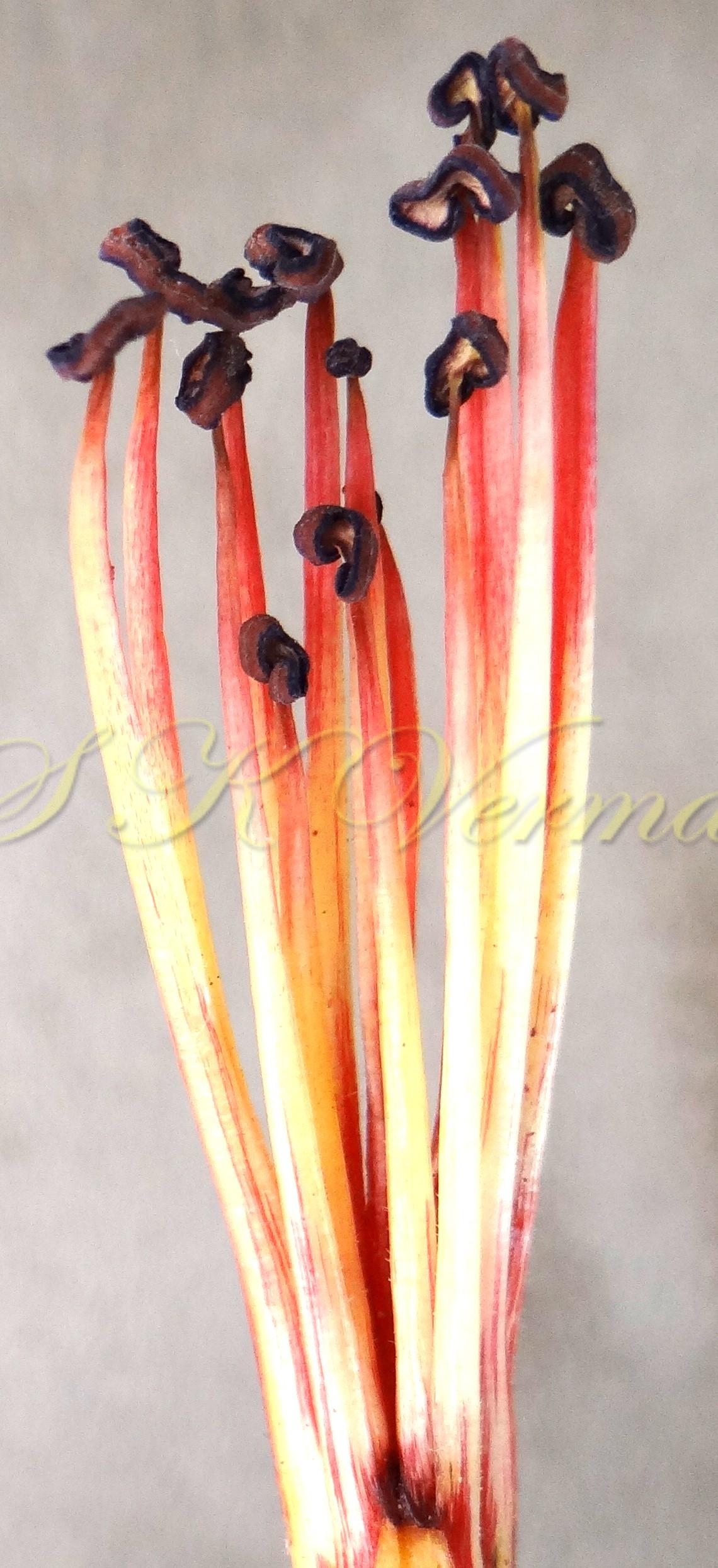BOMBAX
Bombax
L., Sp. Pl. 511. 1753; Gen. Pl. ed. 5: 227. 1754; Masters in Hook. f., Fl. Brit. India 1: 635. 1875; A. Robyns, Bull. Jard. Bot. Brux. 33: 84. 1963; Hutch, Gen. Fl. Pl. 2: 532. 1967; Fl. China @ eFloras.org 13: 153; Fl. Pak. @ eFloras.org p. 1; Salmalia Schott. & Endl., Melet. Bot. 35. 1832.
Deciduous large tree, trunk and branches armed with prickles. Leaves digitately compound, long petioled and glabrous; leaflets 3-9, almost entire; stipules small, deciduous. Inflorescence axillary or subterminal, solitary or fasciculate, clustered at the end of branchlets, complete, actinomorphic, bisexual, hypogynous; peduncle marked with 2-3 scars. Calyx leathery, cup-shaped, truncate, 3-5-lobed, deciduous and splitting irregularly, calyx tube with 2-3 scars. Petals narrowly obovate- oblong or elliptic-oblong, often pubescent. Stamens numerous, multiseriate, polyadelphous (mostly in 5 bundles), bundles antipetalous, staminal tube inflated; anthers monothecous, rarely bithecous in the innermost series of stamens. Carpels 5, syncarpous; style clavate, divided into 5 spreading branches at top. Capsule dehiscing by 5 longitudinal valves, woody or coriaceous, woolly within. Seeds smooth, globose.
8 species
Bombax ceiba
Bombax ceiba
L., Sp. Pl. 1: 511. 1753; Fl. China @ eFloras.org 12: 301, 302; Fl. Pak. @ eFloras.org p. 3; B. ceiba Burm. f., Fl. Indica 145. 1768; B. malabaricum DC. Prodr. 1: 479. 1824; Salmalia malabarica (DC.) Schott & Endl., Melet. Bot. 35. 1832.
Tall deciduous tree, up to 25 m tall, trunk buttressed, undivided, sharp conical prickles on young branches and stem, branches in whorls and spreading, bark gray-white. Stipules minute, sometimes 2.5 cm long, thick, triangular, with hairy margin, caducous. Leaves up to 40 cm long, digitately compound, spreading; petioles 10-20 cm long, pulvinate at base; leaflets 5-7, unequal; petiolules 1.5-4.0 cm long; blades oblong to oblong-lanceolate, 6.5-20 cm x 2.7-6.0 cm, glabrous, margin entire, apex acuminate, attenuate at base, coriaceous. Inflorescence many fascicles of 1-4 flowers borne at or near the end of branches. Flowers actinomorphic, bisexual, pentamerous, hypogynous, large, +/-10 cm long and up to 19 cm across. showy, red (occasionally orange red). Pedicels thick, 2-2.5 cm long. Calyx thick, fleshy, cup-shaped, 3.8-4.5(-5.3) cm long, 3-lobed (occasionally 2-lobed), tube ca. 2.3 cm long and lobes 1.5-2.3 cm long, semiorbicular; calyx tube with 2-3 scars; calyx glabrous abaxially and densely yellowish sericeous adaxially; calyx falling away from receptacle along with stamens and corolla. Petals 5, free, twisted, 8-11 cm x 4-5.5 cm, tomentose without, sparingly pubescent within; elliptic-oblong to oblong, recurved, fleshy, with close parallel veins. Stamens inserted at the base of calyx and adnate to petals, ca. 75 in number, united at base in 6 bundles, each of 11-15 stamens, outer 5 bundles opposite to petals, innermost bundle surrounding the pistil is composed of 15 stamens of which 5 innermost are the largest and forked; filaments 3.5-6 cm long (about half as long as petals), pink, somewhat flattened at base; anthers long, afterward twisted, violet/ brown, mostly monothecous, but anthers bithecous of inner most bundle of stamens around the style. Carpels 5, syncarpous; ovary conical, green, covered with silky hairs, 5-12 mm long; style clavate, larger than the stamens, 5.9-6.5 cm long, hairy at base; stigmas 5, linear, 5-6 mm long. Capsule 10-15 cm x 4.5-5 cm, oblong-ovoid, woody, loculicidally 5-valved, valves downy without, lined with silky hairs within. Seeds many, obovoid, smooth, 6 mm long, embedded y whitin silke wool.
Common Names: Silk Cotton Tree; Simbal, Simal (Hindi)
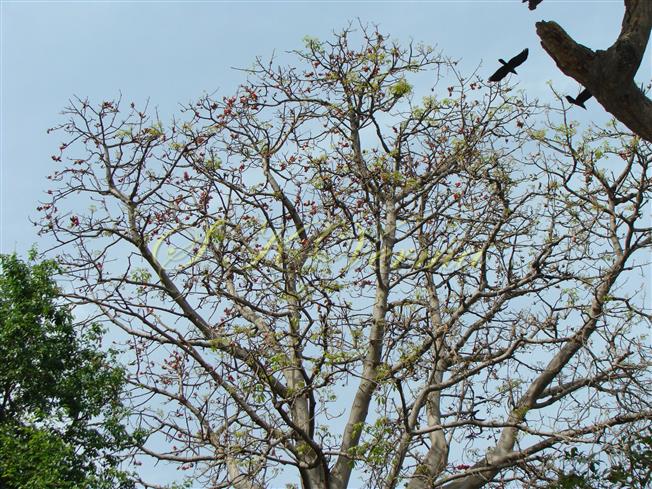
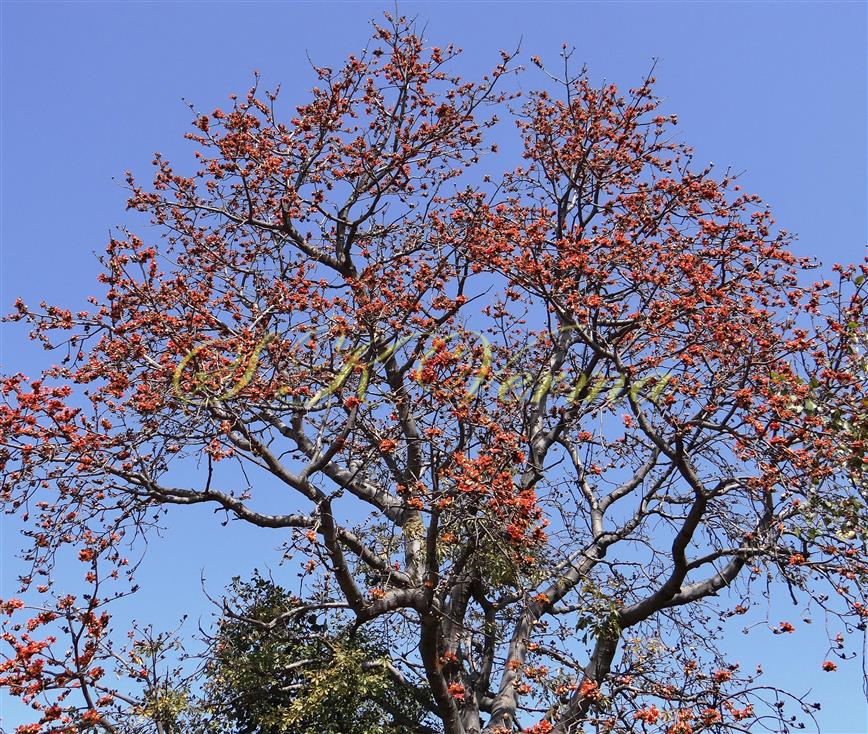

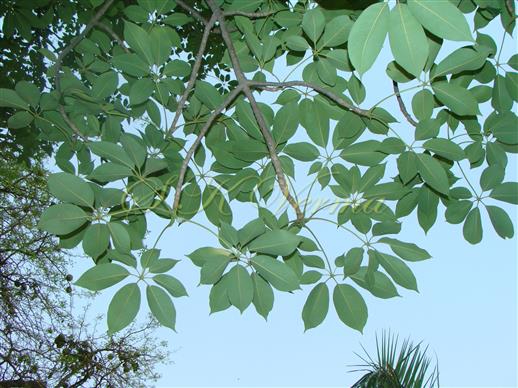
-DSC05198.jpg)
-DSC05199.jpg)
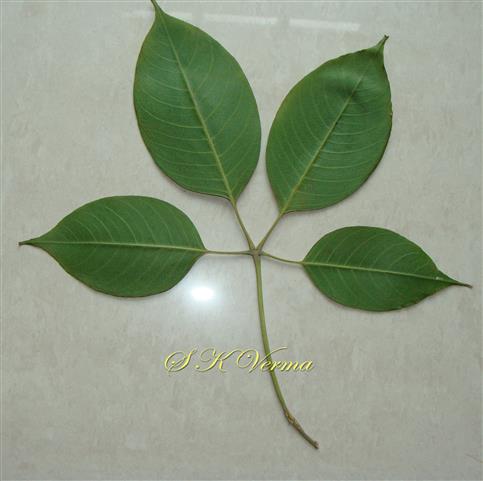
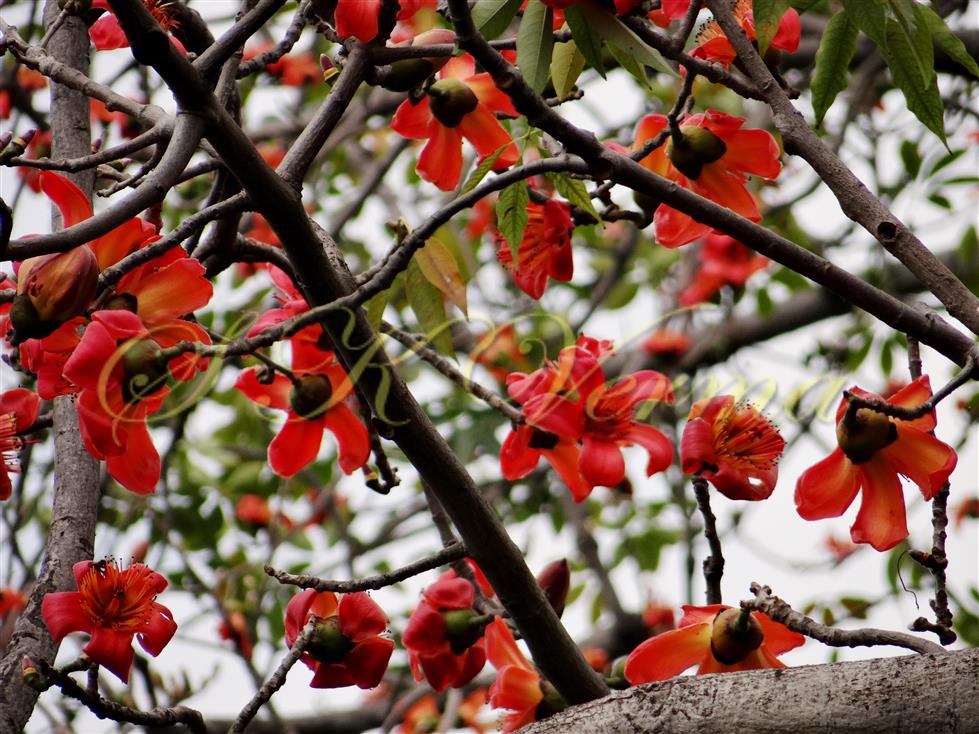
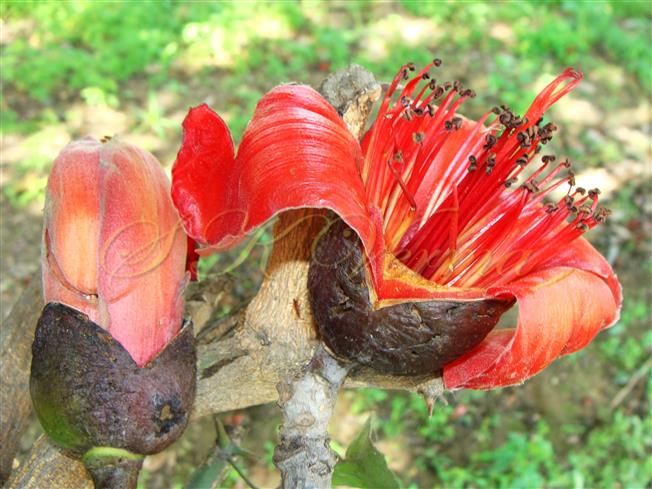
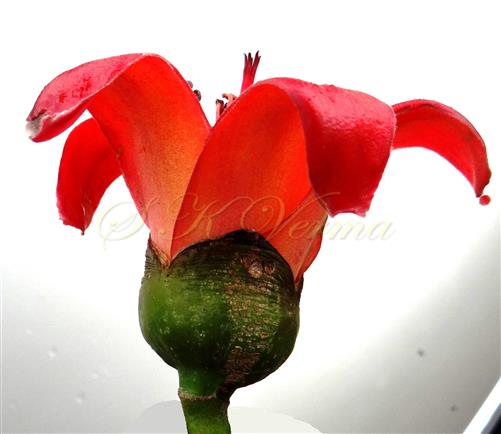
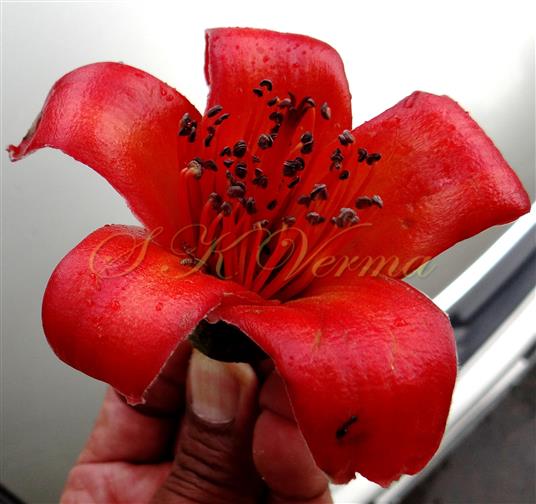
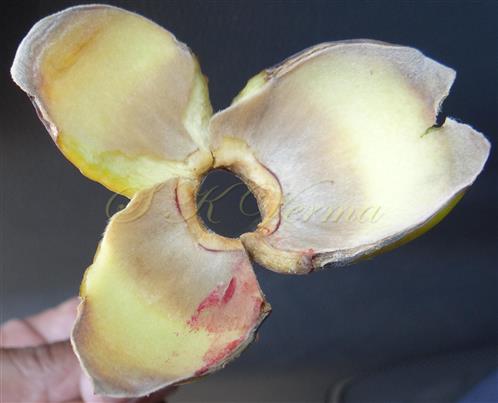
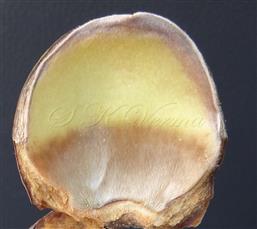
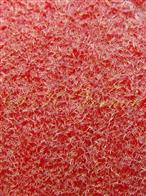
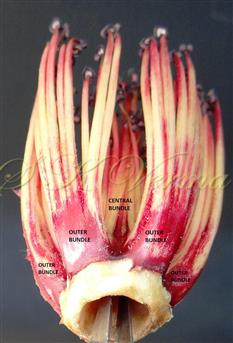
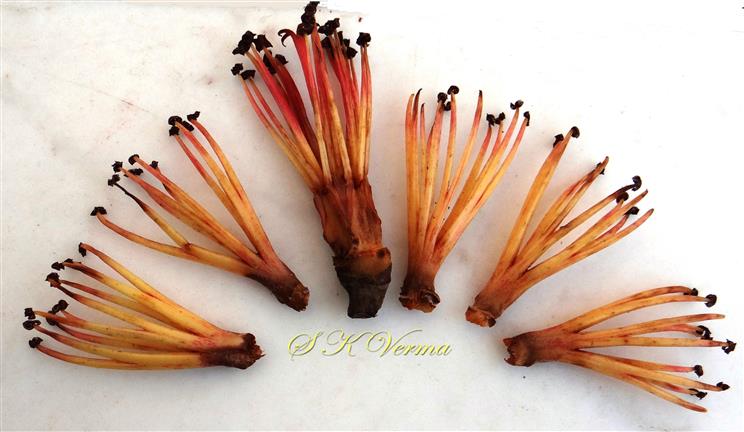

 -DSC04900.jpg)

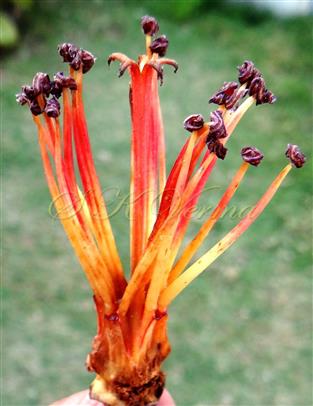
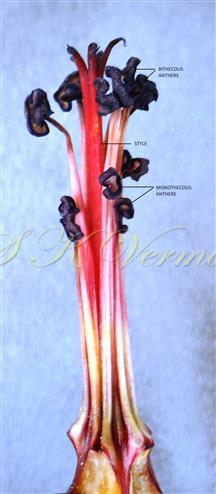
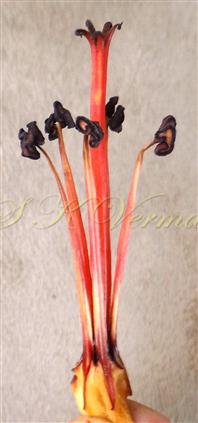
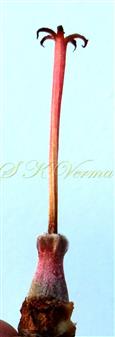





-DSC05198.jpg)
-DSC05199.jpg)










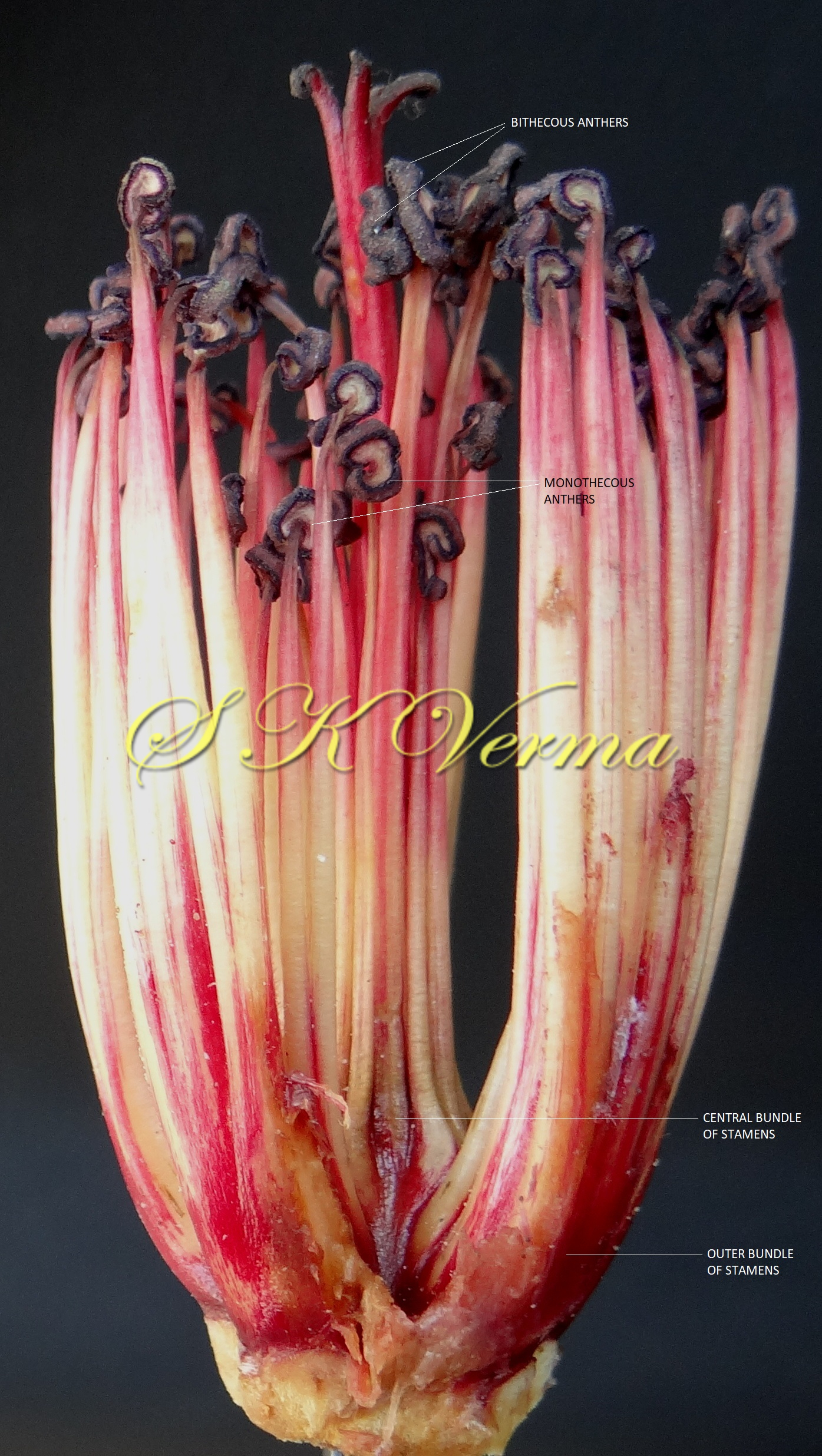
 -DSC04900.jpg)
